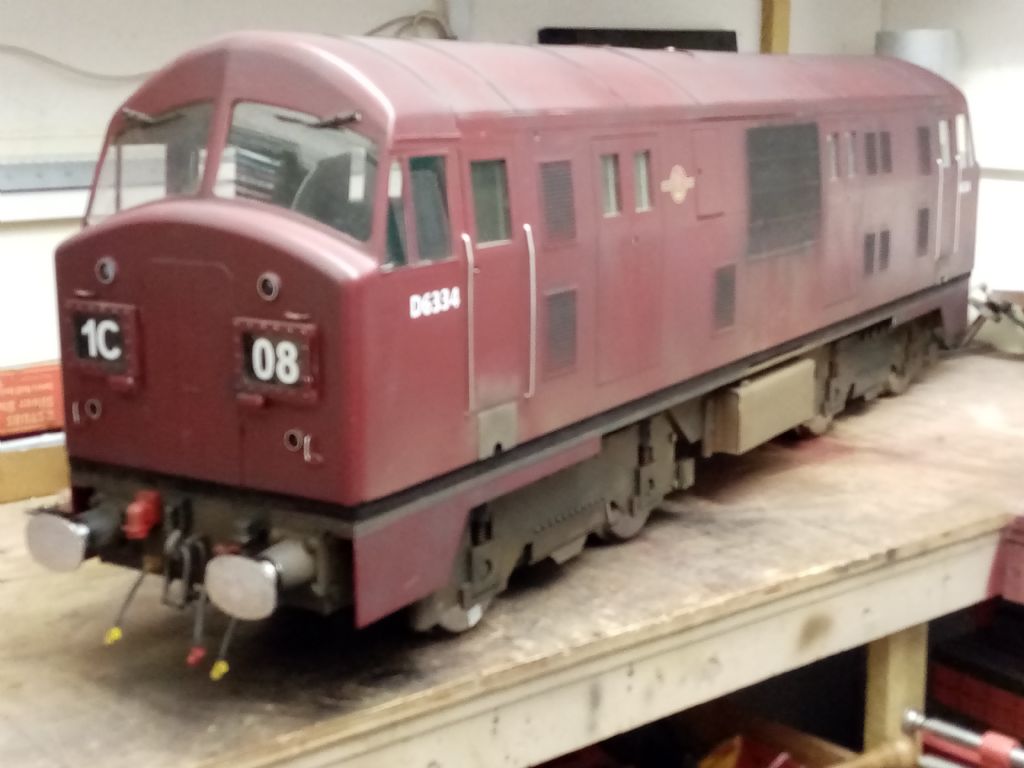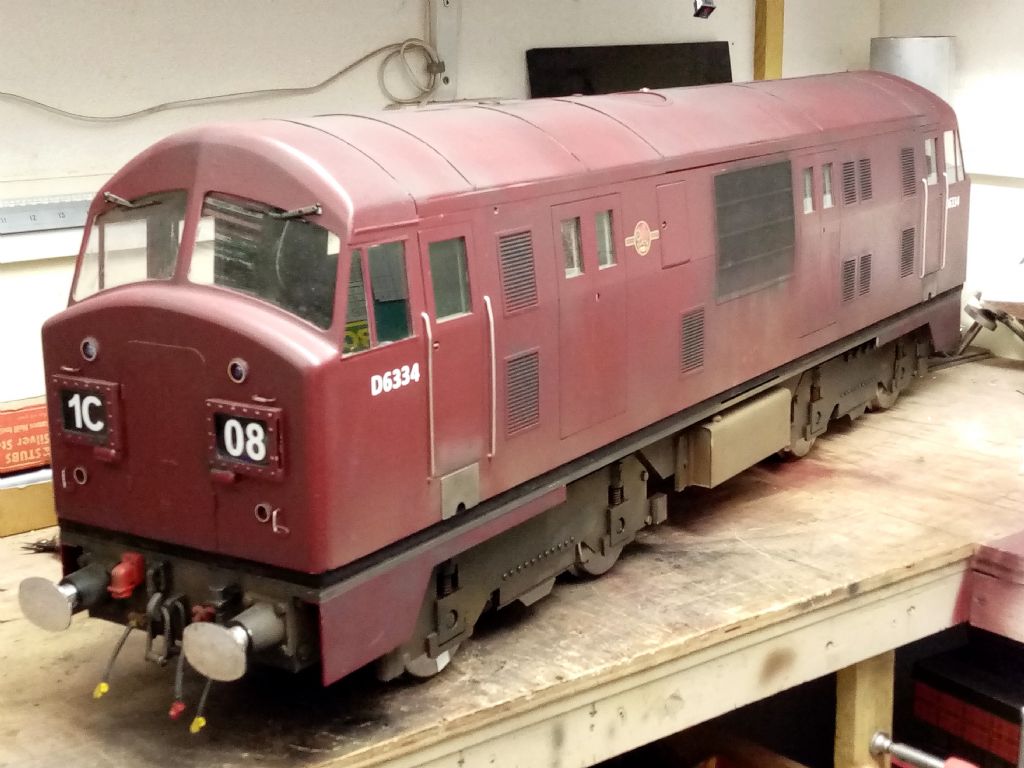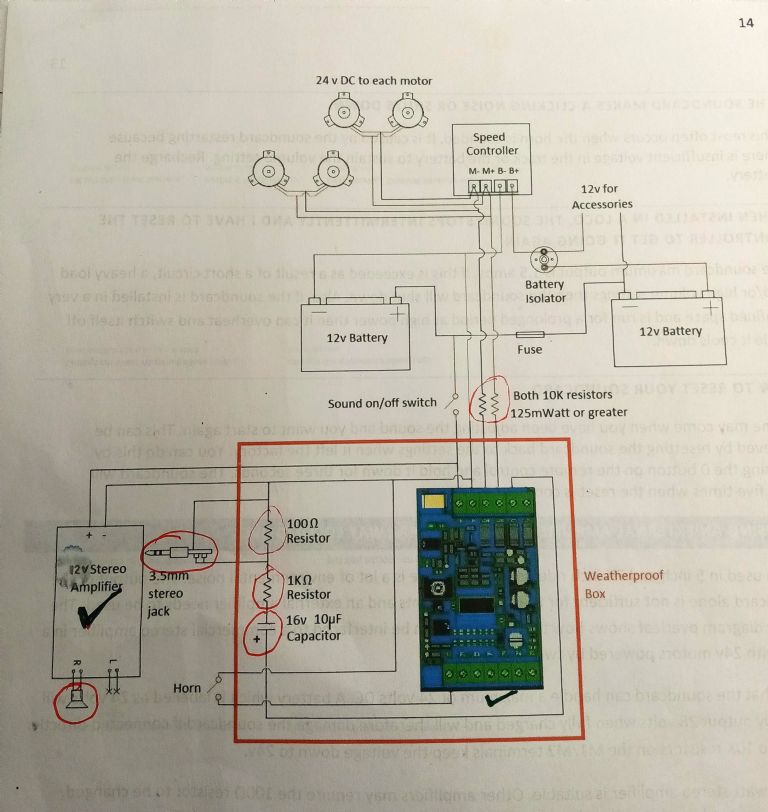Posted by Ron Laden on 17/08/2021 16:06:37:
Hi guys,
… what I dont understand is how the 16v capacitor, 1K ohm and 100 ohm resistors and the way they are connected to the amplifier stereo jack are working. … it would just be good to know.
…

Late answer, but here goes.
The 100Ω and 1kΩ resistors form a potential divider. It's purpose is to match the output of the sound board to the level required to drive the amplifier. Most amplifiers are quite sensitive and if the input signal is excessive, the amplifier will clip and otherwise distort the audio sent to the loud speaker. The divider's ratio is 10:1, which would be right, for example, if the amplifier input expected 1mV and the sound board output a 1V signal. It's a fixed volume control.
A useful property of capacitors is they block DC current whilst allowing AC to flow. The 16µF capacitor is a isolating precaution: it stops any DC that might happen to be on the sound board output from confusing the amplifier.
The divider and capacitor ensure the right level and type of voltage are fed from the sound board to the amplifier. The combination will also act as a tone control, but like as not the effect has been ignored by the designer. If the output sounds a bit shrill, or lacks bass, try increasing the size of the capacitor. Anything up to 220µF should do.
Although the amplifier is stereo the Sound Card is mono. The Potential divider drives both Right and Left Channels, a mild bodge. Reason for this is likely cost. Small stereo amplifiers being common as muck are often cheaper and easier to source than their mono equivalents. It's nothing to worry about.
Dave
Ron Laden.







